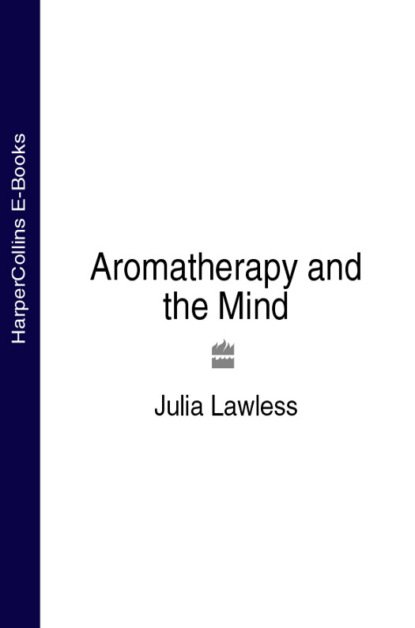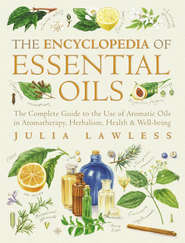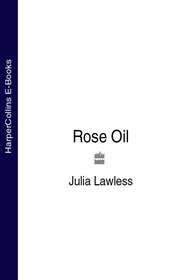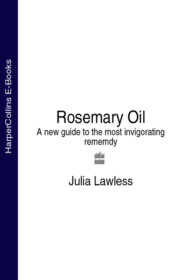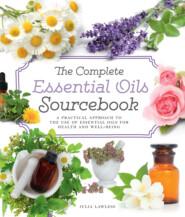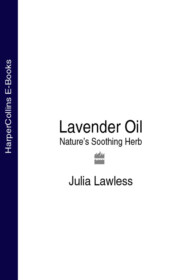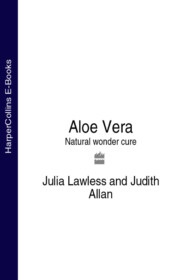По всем вопросам обращайтесь на: info@litportal.ru
(©) 2003-2024.
✖
Aromatherapy and the Mind
Настройки чтения
Размер шрифта
Высота строк
Поля
mace (Myristica fragrans)
Woods
aloes or eagle wood (Aquillaria agallochum)
cedar (Juniperus virginiana)
cypress (Cupressus torulosa)
juniper (Juniperus mexicana)
sandalwood (Santalum album)
REFERENCES
1 (#ulink_dfd6d721-9a22-55e2-a091-39a13cffa283). Cited in Nielsen, K., Incense in Ancient Israel, E. J. Brill, 1986, p.9.
2 (#ulink_552cb179-b9d8-59db-aae6-9de9a42d8b52). Le Guérer, A., Scent: The Mysterious Power of Smell, Chatto and Windus, 1993, p.120.
3 (#ulink_5a9a23b6-2a74-567f-98c4-86e0a350e8a7). Nielsen, op. cit. p.10.
4 (#ulink_eac1526e-0006-5c3e-b023-9dca6e1f80f3). Ibid., p.28 (Assur level H-G, Tepe Gawra).
5 (#ulink_546c28ec-a2cf-5198-8ecd-182f551572e2). Ibid., p.25 (Tablet IX, Surpu Series).
6 (#ulink_d6f2fd7e-be41-5896-a96c-d976289d3ab1). From The Ritual Practice of the Riwo Sangcho (unpublished version).
7 (#ulink_768051b4-d532-53e7-a541-f80551f58c88). Morita, K., The Book of Incense, Kodansha International, cited in Aromatherapy Quarterly, no.36, p. 18.
8 (#ulink_e37388c2-bcb6-5f9c-8d8d-22003e522ce2). Groom, N., Frankincense and Myrrh, Longman, 1981, p.14.
9 (#ulink_913e3a37-2295-54f3-9991-5672e56c3126). Tisserand, R., The Art of Aromatherapy, C. W. Daniel, 1985, p.28.
10 (#ulink_913e3a37-2295-54f3-9991-5672e56c3126). Sigismund, R., Die Aromata, C. F. Winterische Verlagshandlung, Leipzig, 1884, p.2.
11 (#ulink_9415b5c0-4544-56b8-90d5-d8d28d3b9eba). Exodus 30: 37–7.
12 (#ulink_ae480605-4d04-5bb8-bea4-06e985fc3f21). Numbers 17: 11–14.
13 (#ulink_96f83133-f810-5a0a-9232-c64db6b595b0). Atchely, 1909, cited in Stoddart, D. M., The Scented Ape, Cambridge University Press, 1990, p.180.
14 (#ulink_d9880a6c-d22d-56d7-9f38-0d173612f220). Jung, C. G., Collected Works, vol. IX, p.72.
15 (#ulink_9617bf52-347f-5f80-ae46-489987fa6eeb). Stoddart, op. cit., p.203.
16 (#ulink_63cae6b5-4a14-5309-bccb-4a77ae149f4e). Ibid.
17 (#ulink_e8152f18-fde8-5526-b167-92d2c3bf6a09). Ibid.
3 Scent, Soul and Psyche (#ulink_805799ca-54ba-5ffe-ae92-ce84c11da41d)
The Wind One Brilliant Day …
The wind one brilliant day, called
to my soul with an aroma of jasmine.
‘In return for this jasmine odor,
I’d like all the odor of your roses.’
‘I have no roses; I have no flowers left now
in my garden … All are dead.’
‘Then I’ll take the waters of the fountains,
and the yellow leaves and dried up petals.’
The wind left … I wept. I said to my soul,
‘What have you done with the garden entrusted to you?’
Antonio Machado, trans. Robert Bly, 1983.
(#litres_trial_promo)
Why have we let the flowers die in the garden of our soul? Even the dried up petals have been blown away! Our present culture pays little attention to the needs of the heart – our emotional feeling nature has been subjugated to the constraints of reason for so long, that we now find ourselves in a spiritual wasteland. Compared to the great civilizations of the past, we do not honour enough the inner or unseen realm of the mind, the subtle expressions of the psyche. At one time, incense was burned upon temple altars and at household shrines on a daily basis, fragrant flowers were strewn on the floors of churches and dwelling-places, and the evocative power of perfume was understood as the silent language of divinity and human emotion. Now, having banished the ancient gods and goddesses, how are we to show our respect?
THE SYMBOLIC IMAGINATION
I do not feel like writing verses;
but as I light my perfume-burner
with myrrh, jasmine and incense,
they suddenly burgeon from my heart,
like flowers in a garden.
(#litres_trial_promo)
Scent inspires the imagination and frees the spirit. In poetry, flowers are often used directly as a symbol of the soul, for their fragrance has an intangible quality which reaches out to our most intimate depths. To the primitive mind, the child’s eye or the poet’s pen, everything in the physical world can be seen as an expression of the more subtle, immaterial realm. To the ancients, there was far more to a plant than simply its tangible form, for each herb carried a whole series of associations with mythology, astrology and folklore. To the mind’s eye, the scent, shape and colour of a plant, its habitat and manner of growth all helped to convey its innate quality. This essential, underlying property was known as the ‘virtue’.
The bay tree, for example, with its radiant shining leaves, evergreen growth and narcotic, heady scent was associated with the sun, the sign of Leo, the god Apollo and the ‘virtues’ of strength, protection, courage, inspiration, prophecy and insight. The leaves were made into wreaths to crown victors and great artists or poets; it was planted by the door of houses to keep evil ‘at bay’; and was used as incense by the pythia, the high priestess at the temple of Apollo in Delphi. When burned, herbs were seen to release their inner virtues. The scent of bay thus evoked the presence of Apollo, as well as the qualities of prophecy and clairvoyance needed by the pythia to transmit the message of the oracle.
John Gerard, in his popular herbal of 1597, esteemed scent before taste and before ‘any confection of the apothecaries’ for comforting the heart. In Britain, even up the Victorian age, the scent of a flower was believed to be its soul, and a fragrant bouquet was considered a time-honoured symbol of love and human passion. As romantic tokens, specific flowers were often used as metaphors for the range of the human emotions. A complex vocabulary was gradually developed, in which each flower was understood to represent a different mood or stage in the courtship procedure. In the language of flowers, the white lily stood for purity, innocence and virginity; the bluebell for loyalty, assurance and truth; and the mimosa for sensitivity and delicacy. A single red rose said ‘I love you’, but a bunch of mint meant ‘Find a spouse of your own age and background’! The names of some flowers spoke for themselves, such as forget-me-not, heartsease or love-lies-bleeding.





